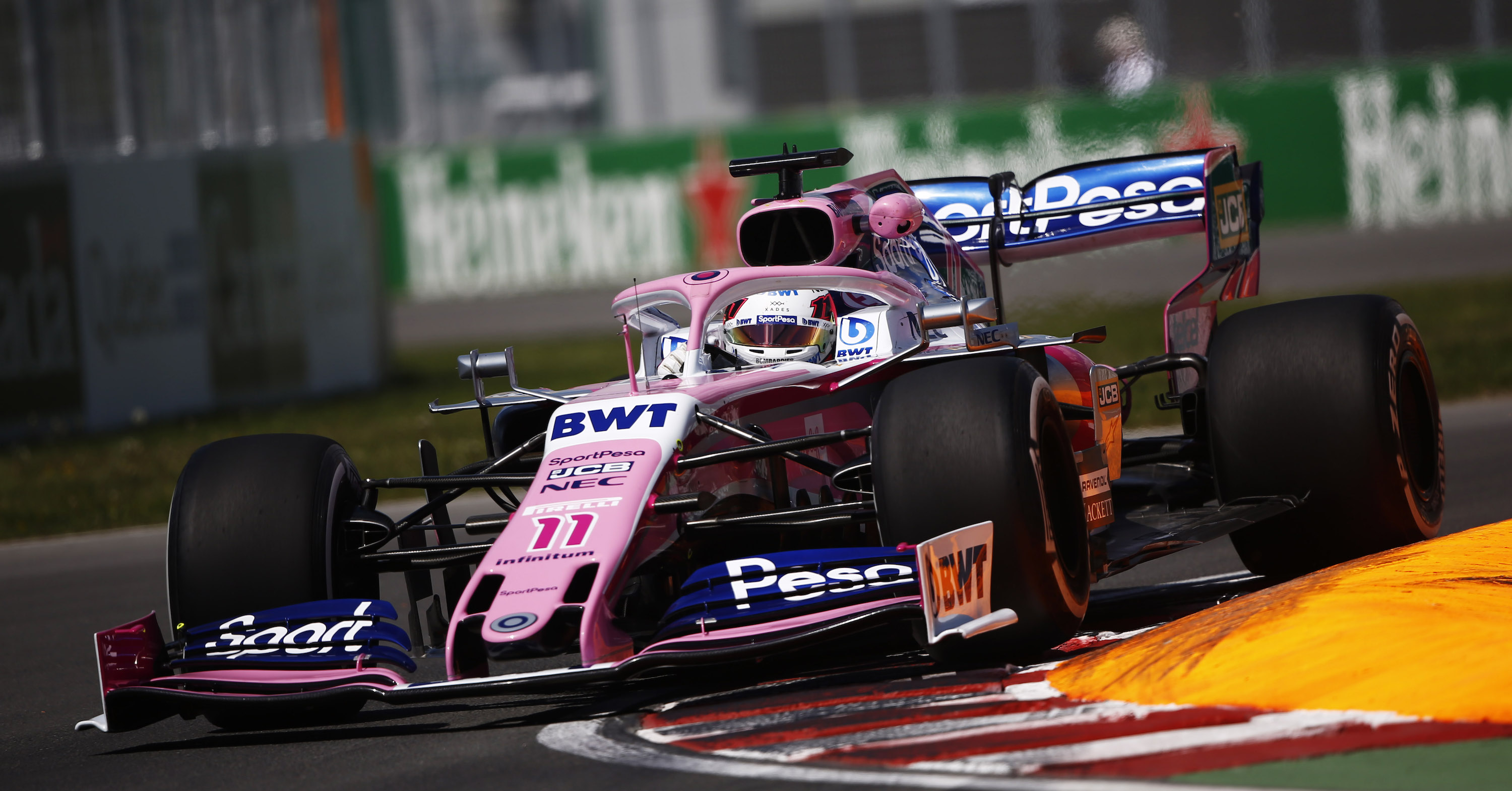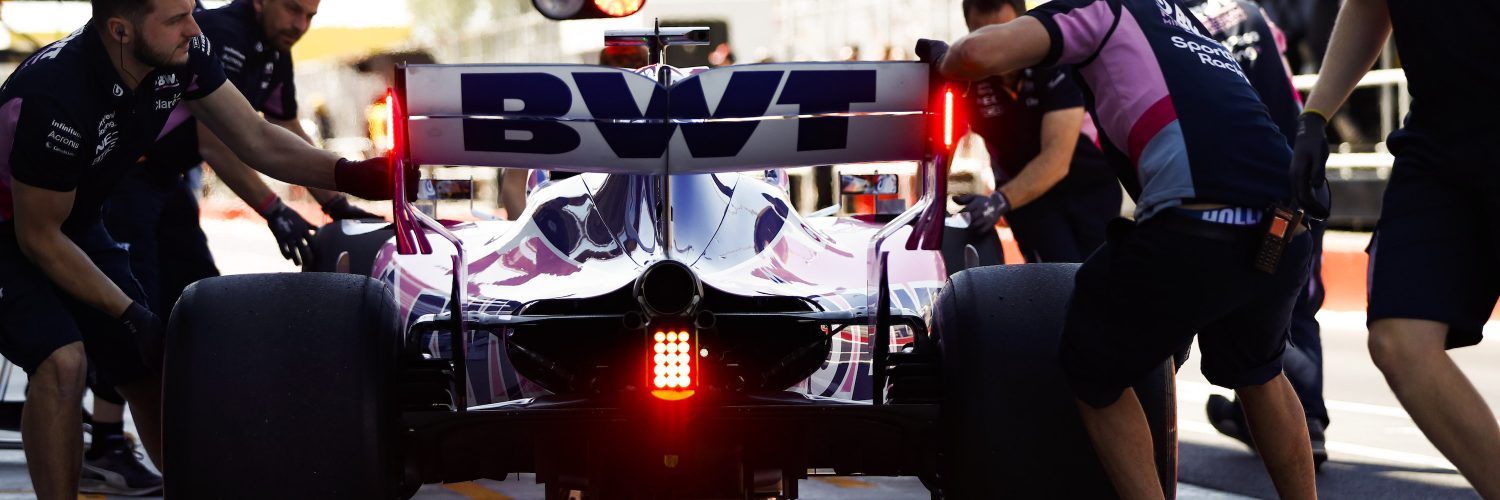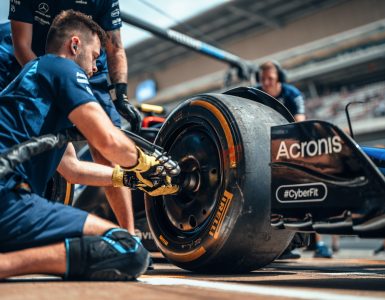For the Canadian GP, many of the teams have turned up with “spoon” rear wings. These are the wings where the depth and angle of attack vary across the span, ranging from subtle to more extreme designs. Think the rear wing Mercedes ran in Baku in 2016. The spoon wings are somewhat similar to a twisted wing you might see in GT racing, although the reasons for their implementation differ, the technique of varying the wing across the span is similar. This style of wing is used primarily on tracks where straight-line speed is a key factor but a compromise between as little drag and downforce is required for overall lap time. Compared to a conventional wing the spoon wing is less draggy but also produces less downforce.
Drag on a Rear Wing
The drag acting on the wing consists of skin friction drag, form drag and induced drag. Skin friction drag is the force in the boundary layer resisting the forward motion of the car. It results from the air flowing over the bodywork and is analogous to friction between two solid objects, hence the name. ‘Tripping the boundary layer to turbulent’ is often talked about by F1 tech writers. A turbulent boundary layer results in an increase in skin friction drag, so you may think it’s a disadvantage. The benefit of this outweighs the drag increase as the boundary layer becomes more resistant to separating. Separated flow in almost all cases is very bad and should be avoided. So the benefit of a turbulent boundary layer is obvious and in comparison to other types of drag skin friction drag is very small.

Form drag occurs because of the shape of the object and acts on all objects moving through a fluid. It is the shape that primarily determines the level of drag. Drag is the force component acting in the opposite direction to the direction of travel or the “X- direction” in a cartesian co-ordinate system as used by the teams. And downforce is the component acting downwards, fairly self-explanatory. However, the wing doesn’t see two distinct forces, it just sees a force acting ‘normal’ or perpendicular to its surface. This force is due to the pressure distribution around the upper and lower surfaces of the wing. This type of drag is partially why drag increases with the level of downforce.
The other reason drag increases with downforce is the next type of drag, induced drag. Induced drag only occurs on bodies generating downforce (or lift). When there is a higher pressure above and lower pressure below, the airflow above flows around to the lower pressure region below forming a vortex. To reduce this effect teams have put large end plates on the wings. This doesn’t eradicate the tip vortices though, there is still a higher pressure inside the end plate compared to the freestream outside. So, the airflow rolls around the top of the end plate forming a vortex. These tip vortices are often visible when the cars are on track on humid days, especially now with the changes to the wings for 2019. What you are seeing is not the whole vortex, it is a part of the vortex core, so the vortex including the core are larger than they appear.
The tip vortices induce an upwash in this region which means the airflow the wing sees is at a new angle, the induced angle. So, the effective angle of attack of the wing is now the geometric angle of attack, the angle the team set the wing at relative to the horizontal, minus the induced angle. As a consequence, the local aerodynamic force vector is inclined by the induced angle. This increases the drag component; this additional drag is the induced drag.
It can also be thought of in terms of energy. The tip vortex has a large amount of kinetic energy due to the translational and rotational motion. The law of conservation of energy means that this energy can not just appear, it must be provided by the engine.
How does the spoon wing reduce drag?

As the spoon wing reduces the geometric angle of attack towards the tips, it changes the spanwise (wing tip to wing tip direction) pressure and downforce distributions. The downforce distribution that gives the minimum induced drag is an elliptical distribution.


As shown by the above diagrams the distribution towards the tips reduces more for the spoon wing than the conventional wing. The downforce produced near the tips of all wings will reduce due to the formation of a vortex and reduction in pressure differential between the upper and lower surfaces.
The spoon wing produces less downforce towards the tips and therefore pressure differential towards the wing tips is reduced. This means less flow spills over and the vortex formed is weaker. The weaker vortex has less kinetic energy and causes less upwash. Both of these effects mean the induced drag is reduced. Some spoon wing geometries reduce the wing chord towards the tips too. This reduces the mean chord of the wing and therefore increases the aspect ratio of the wing. Aspect ratio is equal to wing span divided by mean wing chord. The larger the aspect ratio the less the induced drag.
Another thing the reduced angle of attack towards the outer edges of the wing is the total force acting on the wing is lower therefore; the form drag is reduced. However, the downside of this is less downforce is produced by this style of wing. This is why the spoon wing is used at tracks where a compromise between downforce and drag is required, rather than a track like Monaco where as much downforce as possible is needed.




